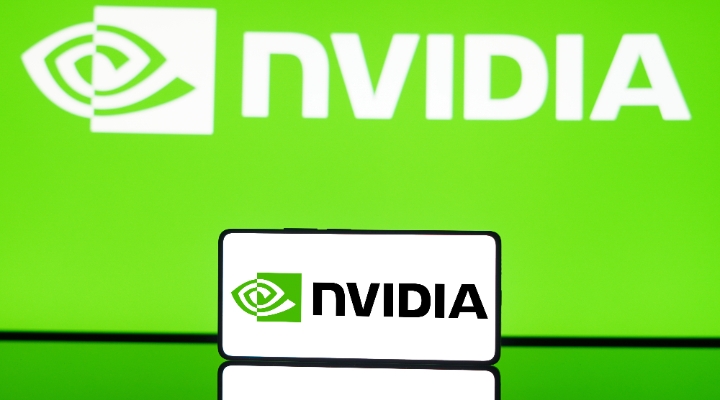
Nvidia (NVDA) released earnings after the market close on May 22. Here’s what our analyst thought of the results, which sent shares rising in pre-market trading.
Key Morningstar Metrics for Nvidia
- Fair Value Estimate: $1,050
- Morningstar Rating: 3 stars
- Economic Moat: Wide
- Morningstar Uncertainty Rating: Very High
Nvidia expects the next quarter's revenue to be $28.0 billion, up 8% sequentially and 107% year on year, and ahead of FactSet consensus estimates of $26.6 billion. We anticipate Nvidia will once again beat these estimates. We raise our fair value estimate to $1,050 from $910 as we model stronger data centre revenue growth over the next several quarters.
What We Thought of Nvidia's Earnings
Wide-moat Nvidia (NVDA) once again reported stellar quarterly results and provided investors with even rosier expectations for the upcoming quarter, as the company remains the clear winner in the race to build out generative artificial intelligence capabilities. We’re encouraged by management’s commentary that demand for its upcoming Blackwell products should exceed supply into calendar 2025, and we see no signs of AI demand slowing either.
We raise our fair value estimate to $1,050 from $910 as we model stronger data centre revenue growth over the next several quarters while maintaining our longer-term growth rates from a higher installed base of AI equipment. Shares were up about 6% on the earnings report, and we think the reaction is justified and view shares as fairly valued.
Revenue in the April quarter was $26.0 billion, up 18% sequentially as more supply for Nvidia’s graphics processing units came online. Revenue was up 262% year over year and ahead of guidance of $24.0 billion. Data centre revenue remains the focus, coming in at $22.6 billion (87% of total revenue), up 23% sequentially and 427% year on year. Demand continues from cloud computing leaders as they support their customers in building AI models, as well as from enterprises, consumer internet leaders like Meta Platforms META, and sovereign governments building AI into telecom and other services. Nvidia still wields exceptional pricing power, with an adjusted gross margin of up 220 basis points sequentially to 78.9%, ahead of guidance of 77%.
Nvidia expects July-quarter revenue to be $28.0 billion, up 8% sequentially and 107% year on year, and ahead of FactSet consensus estimates of $26.6 billion. We anticipate Nvidia will once again beat these estimates, and we model $29.7 billion of revenue. The firm has earned at least $3 billion of incremental data centre revenue in each of the past three quarters, driven by AI demand, and we anticipate that a fourth similar quarter is on the near-term horizon.
Nvidia’s Stock Split Starts in June
For the July quarter, the adjusted gross margin is expected to fall to 75.5%, likely due to higher costs associated with the rollout of Blackwell products. Still, we think guidance for July implies a 62% adjusted operating margin, which is spectacular by any measure. On the financial and capital allocation front, Nvidia raised its dividend by 150% but still sits at a relatively immaterial $0.40 per share annually. The company will also conduct a 10-for-1 stock split at the start of trading on Monday, June 10.
Given Nvidia’s astronomical growth, we continue to assess the risk of companies buying too many AI GPUs too soon, leading to an air pocket and excess inventory at some point in the future. We see no such signs today. Leading cloud companies have all boosted their capital expenditure plans in 2024 to support AI investments, and it still appears that this spending is being funneled to Nvidia. Beyond the mega-cap cloud leaders, enterprises also seem to be boosting capex for similar reasons. Even as new Blackwell products are rolling out, management is confident that it will still sell its generation of Hopper H100 and H200 products in the meantime.
For fiscal 2025 (which ends January 2025 and effectively pertains to calendar 2024), we raise our forecast for data centre revenue to nearly $111 billion, up from $101 billion previously, and up from $47 billion generated last year and only $15 billion two years ago. We anticipate that Nvidia will grow revenue in this segment by an incremental $3 billion or so per quarter through the fiscal year as its supply chain partners build out additional capacity to support Nvidia’s roadmap. We previously assumed another strong year of growth in fiscal 2026. Still, management’s insight into the Blackwell rollout gives us greater confidence that Nvidia will keep growing quarter by quarter in fiscal 2026 as well. We now model 41% revenue growth in data centre in fiscal 2026 to $156 billion.
For the most part, we model low-teens revenue growth in data centre each year after that, albeit off a higher base, as these initial AI buildouts are greater than we previously anticipated. Given Nvidia’s stellar operating profits, any increase in revenue leads to an outsize boost to free cash flow (and, thus, our fair value estimate) in our valuation model. Along these lines, we maintain our Very High Uncertainty Rating for Nvidia, given the nascent and fast-moving nature of the AI market, plus the high operating margins associated with each incremental dollar of revenue, for better or worse.



















